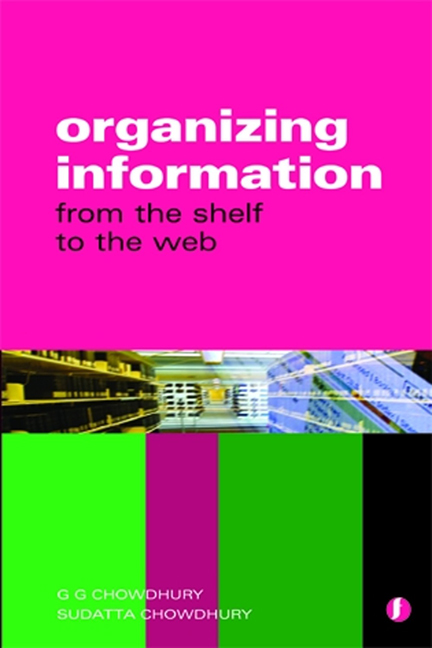Book contents
- Frontmatter
- Dedication
- Contents
- Preface
- Glossary
- 1 Organizing information: what it means
- 2 Information organization in non-library environments
- 3 Cataloguing
- 4 Bibliographic formats: MARC 21 and others
- 5 Library classification
- 6 Subject heading lists and thesauri in information organization
- 7 Organization of internet information resources
- 8 Metadata
- 9 Markup languages
- 10 Ontology
- 11 Information architecture
- 12 The semantic web
- 13 Information organization: issues and trends
- Index
11 - Information architecture
Published online by Cambridge University Press: 10 September 2022
- Frontmatter
- Dedication
- Contents
- Preface
- Glossary
- 1 Organizing information: what it means
- 2 Information organization in non-library environments
- 3 Cataloguing
- 4 Bibliographic formats: MARC 21 and others
- 5 Library classification
- 6 Subject heading lists and thesauri in information organization
- 7 Organization of internet information resources
- 8 Metadata
- 9 Markup languages
- 10 Ontology
- 11 Information architecture
- 12 The semantic web
- 13 Information organization: issues and trends
- Index
Summary
Introduction
Most organizations now produce and use a huge volume and variety of information on the internet and on their intranets. Many of these information resources have been designed and developed over the years as organizations have embraced and adapted to internet and web technologies. As a result, these resources are often not properly organized; in most cases information has been created and organized by a range of individuals, without full consideration of users and their requirements. This has caused enormous problems with finding and retrieving the correct information at the right time with the minimum effort. Fortunately the problem has been recognized, and many organizations now employ appropriate mechanisms for creating and organizing web and intranet information resources. The area of study concerned with the appropriate organization of web and intranet resources to facilitate easy access to, and management of, information is called ‘information architecture’ (IA). Library and information professionals are experienced in organizing information resources in accordance with user requirements, and consequently they have a great deal to contribute to the field of IA. This chapter provides an introduction to IA. First it describes what an IA is and what role it plays in the organization and processing of electronic information. It then goes on to discuss how to build an IA, detailing the stages involved, and outlines the expected outcome of an IA exercise.
What is IA?
The term ‘information architecture’ (IA) was coined by Richard Saul Wurman in 1975, but was first used in information science in the context of organizing websites and intranets by Lou Rosenfeld and Peter Morville in 1996 (Barker, 2005; Rosenfeld and Morville, 2002).
The Information Architecture Institute (2005) defines IA as the art and science of organizing and labelling websites, intranets, online communities and software to support usability and findability. The basic objective of IA is to facilitate access to the web and institutional resources. An IA specifies the way information is labelled and grouped, and the navigation methods and terminology used within the system. Thus, an effective IA enables users to access required information easily, intuitively and confidently (Barker, 2005). Mahon and Gilchrist (2004) emphasize that an information architecture should be domain-specific and therefore should be considered in the context of the organization for which it is built.
Information
- Type
- Chapter
- Information
- Organizing InformationFrom the Shelf to the Web, pp. 187 - 196Publisher: FacetPrint publication year: 2013
Accessibility standard: Unknown
Why this information is here
This section outlines the accessibility features of this content - including support for screen readers, full keyboard navigation and high-contrast display options. This may not be relevant for you.Accessibility Information
- 1
- Cited by
